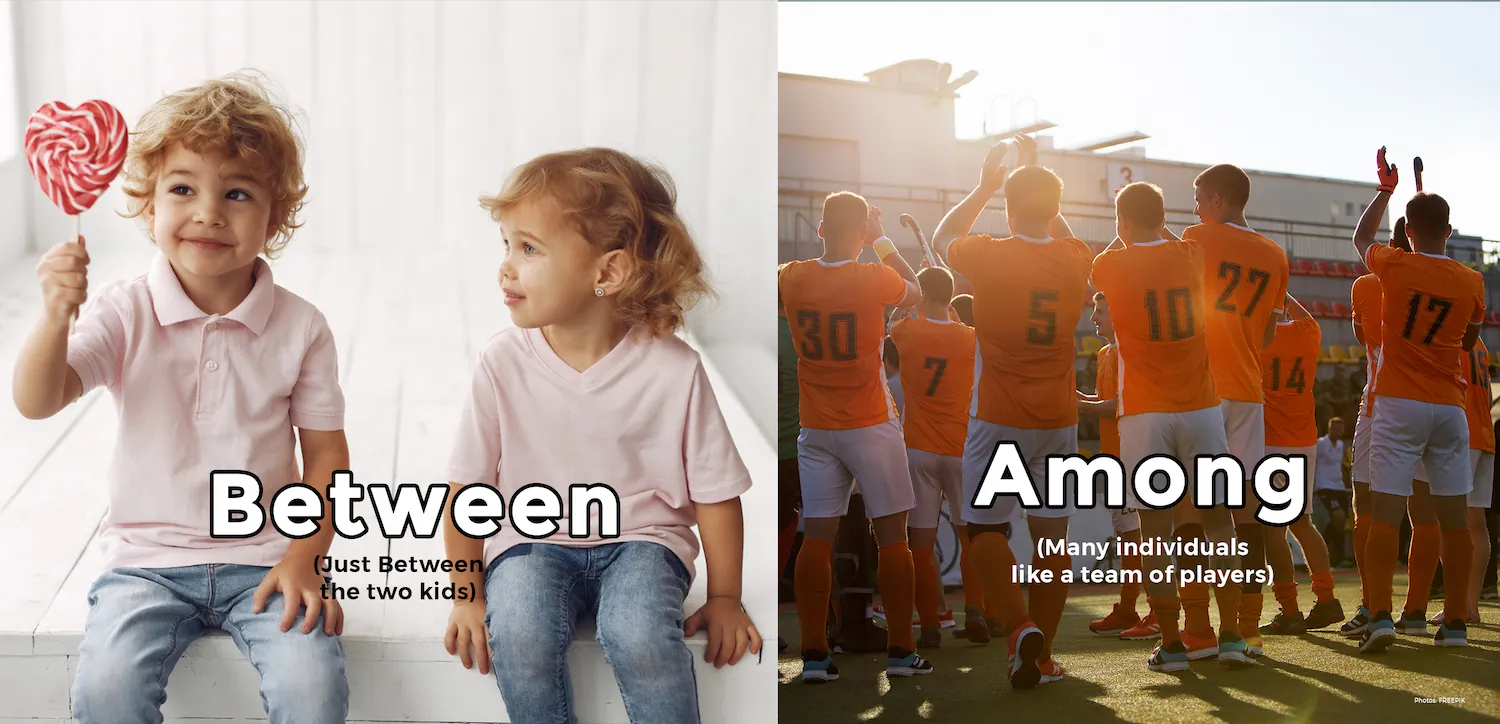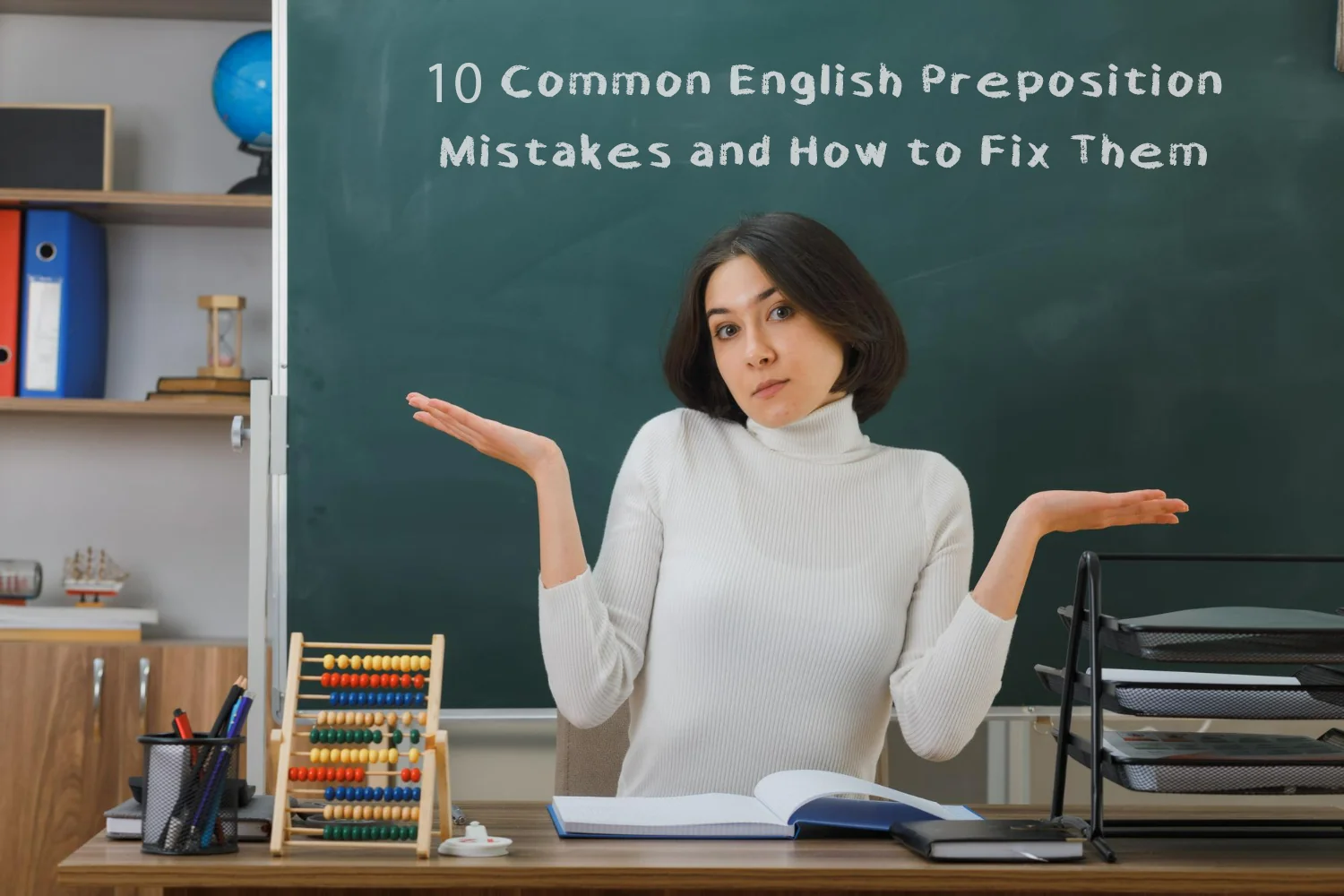Introduction: Mastering Common Mistakes with Prepositions in English
Prepositions are small words like “in,” “on,” “at,” “to,” and “for.” They show connections, such as where something is or when it happens. For beginners learning English, common mistakes with prepositions in English can feel like solving a tricky puzzle. Using the wrong preposition can make your sentence sound odd or confusing. But don’t worry! Even native English speakers sometimes stumble with these words.
This article will guide you through 10 common mistakes with prepositions in English. We’ll break down each error using simple, clear words. What makes this guide unique? We’ll explore why these mix-ups happen, share fun real-life stories, provide easy memory tricks to master the rules, and include quick quizzes to test your skills. These features turn learning about common mistakes with prepositions in English into an engaging game, not just a list of rules. By the end, you’ll feel confident using prepositions in conversations, emails, or stories. Let’s get started!
The Hidden Power of Prepositions
Before we jump into the mistakes, think about this: Prepositions do more than fill sentences. They paint pictures in our minds. For example, saying “I’m on the bus” makes you see someone riding inside, but “I’m at the bus” might confuse people. In jobs, like writing a work email, the right preposition can make your message clear and polite. In travel, wrong ones might lead to funny mix-ups, like asking for directions.
Prepositions also change with cultures. In some places, people say “on the weekend,” while others say “at the weekend.” We’ll touch on that too. Knowing this helps you talk better with friends from different countries. Now, let’s fix those common slips!
Some of these differences shown below:
| 🇬🇧 British English (BrE) | 🇺🇸 American English (AmE) |
| at the weekend | on the weekend |
| at Christmas Day. | on Christmas Day. |
| I’m at the hospital. | I’m in the hospital. |

Mistake 1: “In” vs. “On” for Places – When to Use Each
Many beginners mix “in” and “on” when talking about where things are. “In” means inside something closed, like a box. “On” means touching a flat top, like a table.
*This happens because some languages use one word for both. If your first language doesn’t split them, it’s easy to pick the wrong one.
Real-Life Scenario
Imagine you’re at a party. Your friend says,
❌ Incorrect: “The cake is in the table.” Everyone looks inside the table legs!
✔️ Correct: But it’s “on the table,” sitting on top. A small word changes the whole search.
Memory Trick
Think of “in” like “inside a tin can” (closed space).
“On” – like “on the table” (flat surface).
How to Fix It
Rule: Use “in” for enclosed areas (room, car).
Use “on” for surfaces (floor, wall).
Practice: Say sentences out loud.
✏️ Quick Quiz
- The book is ___ the shelf. (in / on)
- We live ___ a small town. (in / on)
Answer: on
Answer: in

Mistake 2: “At” vs. “In” for Locations – Pinpointing Spots
“At” and “in” both talk about places but:
“At” is for exact spots, like an address.
“In” – is for bigger areas, like cities.
*Beginners often use “in” for everything because it feels safe. But it makes sentences less sharp.
Real-Life Scenario
You’re meeting a friend.
❌ Incorrect: You text, “I’m in the cafe.” But the city has many cafes!
✔️ Correct: “I’m at the cafe on Main Street.” Now they find you fast.
Memory Trick
“At” is like “at a cafe” – specific point.
“In” is like “in the city” – inside a bigger area.
How to Fix It
Rule: “At” for buildings or events like (at school, at a party).
“In” for regions like (in France, in the park).
Listen to songs or watch videos to hear them.
✏️ Quick Quiz
- She’s ___ home right now. (at / in)
- They work ___ New York. (at / in)
Answer: at
Answer: in

Mistake 3: “On” vs. “In” for Transport – Riding Right
For moving things, “in” is for small vehicles like cars.
“On” is for big or open ones like buses or bikes.
*If your language uses the same word for all rides, you might say “in the bus” and sound like you’re inside the engine!
Real-Life Scenario
A tourist asks,
❌ Incorrect: “How do I get in the train?” The helper laughs because it sounds like climbing inside the walls.
✔️ Correct: “on the train,” meaning as a passenger.
Memory Trick
“On” – like “on a throne” – sitting high on big transport.
“In” – like “in a tin” – snug in small ones.
How to Fix It
Rule: “In” for cars, taxis. “On” for planes, trains, buses, bikes.
Exception: “In a boat” if small.
Read travel blogs to see examples.
✏️ Quick Quiz
- We flew ___ a plane to Hawaii. (in / on)
- He drives ___ a red car. (in / on)
Answer: on
Answer: in

Mistake 4: “For” vs. “Since” with Time – Tracking Duration
“For” tells how long something lasts, like “for two hours.”
“Since” points to a start time, like “since Monday.”
*Mixing them comes from thinking all time words are the same. But one measures length, the other a beginning.
Real-Life Scenario
Your boss asks how long you’ve worked here.
❌ Incorrect: You say, “For 2020.” Confusing!
✔️ Correct: “Since 2020,” meaning from that year on.
Memory Trick
“For” – like “forward” – looking at the stretch ahead.
“Since” – like “since when” – back to the start.
How to Fix It
Rule: Use “for” with periods (for days, for years).
“Since” with points (since noon, since childhood).
Make a timeline chart for practice.
✏️ Quick Quiz
- I’ve lived here ___ three years. (for / since)
- She’s been happy ___ last week. (for / since)
Answer: for
Answer: since

Mistake 5: “By” vs. “Until” for Deadlines – Meeting Timelines
“By” – means no later than a time, like finishing “by Friday.”
“Until” – means up to and during, like wait “until Friday.”
*Some languages blend these, so you might rush or wait wrong.
Real-Life Scenario
A student says,
❌ Incorrect: “I’ll study until the exam.” But if the exam is tomorrow, it means non-stop!
✔️ Correct: “by the exam,” meaning finish before.
Memory Trick
“By” – like “bye-bye” – end at that point.
“Until” – like “un-till” – keep going till then.
How to Fix It
Rule: “By” for completion deadlines.
“Until” for continuous actions.
Use planners to note them.
✏️ Quick Quiz
- Please reply ___ tomorrow. (by / until)
- The shop is open ___ 9 PM. (by / until)
Answer: by
Answer: until

Mistake 6: “To” vs. “For” for Purpose – Explaining Reasons
“To” – shows a goal, like “go to eat.”
“For” – shows benefit or reason, like “buy for you.”
*It’s tricky because both link actions, but one is direction, the other kindness.
Real-Life Scenario
You give a gift and say,
❌ Incorrect: “This is to my sister.” Sounds like sending it away!
✔️ Correct: “for my sister,” meaning it’s hers.
Memory Trick
“To” like an arrow to a target.
“For” like “for-eign aid” – helping someone.
How to Fix It
Rule: “To” + verb for purpose (to learn).
“For” + noun (for lunch).
Write shopping lists with “for.”
✏️Quick Quiz
- I went ___ the store ___ buy milk. (to/ for, to / for)
- This book is ___ you. (to / for)
Answer: to, to
Answer: for

Mistake 7: “With” vs. “By” for Tools – Using Helpers
“With” – is for tools you hold, like “cut with a knife.”
“By” – is for methods or makers, like “made by hand.”
* If your language uses “with” for everything, you miss the creator vs. tool split.
Real-Life Scenario
❌ Incorrect: An artist says, “Painted with Picasso.” (Funny, like using the person as a brush!)
✔️ Correct: “Painted by Picasso,” meaning he did it.
Memory Trick
“With” like “with a witch’s wand” – holding it.
“By” like “bye” – done by someone leaving a mark.
How to Fix It
Rule: “With” for instruments.
“By” for agents or ways (by car).
Look at art labels for examples.
✏️Quick Quiz
- The door was opened ___ a key. (with / by)
- The song was sung ___ her. (with / by)
Answer: with
Answer: by

Mistake 8: “About” vs. “On” for Topics – Discussing Ideas
“About” is casual info, like “talk about weather.”
“On” is serious, like “lecture on science.”
*Beginners use “about” always, missing the depth difference.
Real-Life Scenario
❌ Incorrect: In class, you say, “Book about history.”
✔️ Correct: But it’s a deep study, so “on history” fits better for titles.
Memory Trick
“About” – like “a bout” – quick fight, light chat.
“On” – like “on a throne” – expert talk.
How to Fix It
Rule: “About” for general.
“On” for focused or written.
Read book covers to see.
✏️Quick Quiz
- She wrote a report ___ climate change. (about / on)
- We chatted ___ movies. (about / on)
Answer: on
Answer: about

Mistake 9: “Of” vs. “From” for Origins – Tracing Roots
“Of” – shows parts or materials, like “made of wood.”
“From” – shows source, like “from China.”
*Mixing because both link to beginnings, but one is stuff, the other place.
Real-Life Scenario
❌ Incorrect: You say, “Wine of France.” (Sounds like France is the ingredient!)
✔️ Correct: “from France.”
Memory Trick
“Of” like “off” – part cut off.
“From” like “from home” – starting point.
How to Fix It
Rule: “Of” for composition. “From” for origin. Check food labels.
✏️Quick Quiz
- The statue is made ___ marble. (of/from)
- This gift is ___ my friend. (of/from)
Answer: of
Answer: from

Mistake 10: “Between” vs. “Among” for Groups – Sharing Spaces
“Between” is for two things, like “between friends.”
“Among” is for three or more, like “among the crowd.”
*Using “between” for all groups, ignoring the number.
Real-Life Scenario
At a game,
❌ Incorrect: “The ball is between the players.” If many, it’s “among,” hidden in the group.
✔️ Correct: “The ball is among the players.”
Memory Trick
“Between” – like “between the two” or like a pair.
“Among” – like “among many” or a crowd.
How to Fix It
Rule: “Between” for two.
“Among” for more.
Count items in sentences.
✏️Quick Quiz
- Share the candy ___ the two kids. (between / among)
- The secret is ___ us all. (between / among)
Answer: between
Answer: among
Prepositions in Fun Idioms and Everyday Twists
Now that you’ve seen the fixes, let’s explore more.
Prepositions shine in idioms.
Fixed phrases like “on cloud nine” (very happy) or “in hot water” (in trouble).
Learning them as chunks helps. For example, don’t say “on hot water” – it changes the meaning!
In different jobs, prepositions matter too.
In cooking, “bake at 350 degrees.”
In sports, “score against the team.”
Try spotting them in your hobbies.
Your Turn: A Big Practice Challenge!
To make this stick, create five sentences using prepositions from above. Share with a friend and check each other. Or, read a simple story and circle all prepositions. See if they fit the rules!
✏️Practice Quiz: Choose the correct preposition to complete the sentence:
1. “I’m waiting ___ the bus stop.”
a) in b) at
2. “She’s been studying ___ two hours.”
a) for b) since
3. “We’re traveling ___ a train to the city.”
a) in b) on
4. “This necklace is made ___ silver.”
a) of b) from
5. “The prize was shared ___ the three winners.”
a) between b) among
Answers and explanations:
1. b.) among
Explanation: “At” is used for specific locations like a bus stop, as explained in Mistake 2 (“At” vs. “In” for Locations).
2. a) for
Explanation: “For” is used for a duration of time, as described in Mistake 4 (“For” vs. “Since” with Time).
3. b) on
Explanation: “On” is used for large or public transport like trains, as noted in Mistake 3 (“On” vs. “In” for Transport).
4. a) of
Explanation: “Of” is used for materials or composition, as covered in Mistake 9 (“Of” vs. “From” for Origins).
5. b) among
Explanation: “Among” is used for three or more items or people, as explained in Mistake 10 (“Between” vs. “Among” for Groups)
Want to speak more clearly? Discover how the IPA chart can help you with your English pronunciation.
Wrapping Up: Master Prepositions Step by Step
You’ve learned 10 common mistakes, why they sneak in, stories to remember, tricks, and quizzes. Practice daily – talk, write, listen. Soon, prepositions will feel natural. Remember, everyone starts with errors, but fixing them makes you stronger. Keep going, and your English will shine!
Are prepositions still tripping you up? Our beginner-friendly courses at EnglishFact will help you master those tricky words, so you can speak and write with confidence and accuracy. Stop making common mistakes and start communicating clearly.
Talk to us on WhatsApp or join a FREE Trial Class today!





One Response
Wow superb blog layout How long have you been blogging for you make blogging look easy The overall look of your site is magnificent as well as the content